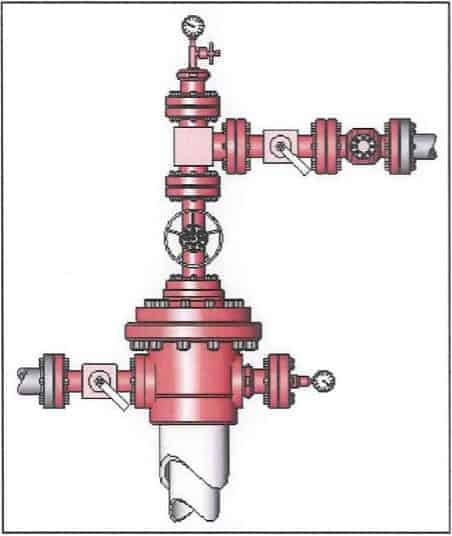The goal of this project was to perform a PFEA injector and water well design evaluation. The objective was to create a low-cost injector design that met industry standards and well-integrity requirements. This job was done for a State Oil Company in South America's Northeast region. This company produces about 25,000 bopd.
Background
A Polymer Flood (PF) pilot project had positive results, and a proposal for commercial-scale deployment was authorised in 2013. However, due to the subsequent decline in oil prices and the necessity of financial restraints, the expansion was halted.
Surface and subsurface investigations have begun in order to improve the IRR of the PF expansion. One of the investigations addressed the redesign of injector wells and the selection of wellheads required for polymer expansion.
Three (3) injectors were operational at the time, with annular packers inserted to protect the casing from the injected polymer. However, all three injectors were found to have excessive casing pressures. A new design for injector wells and wellheads was designed based on the lessons learned and the need to reduce the CAPEX of the polymer flood project.
To ensure that the new design complies with all requirements, the designs had to undergo evaluation by an outside expert in the field.
The Completions SME proposed a project to deliver a cost-effective injector well design that meets industry standards and well integrity requirements.
Deliverables
A digitised final report that included the following:
An executive summary; a technical summary; a description of the analysis technique; a brief description of the workflow employed; and any applicable assumptions Conclusions and recommendations are based on the findings and results.
A new well design was agreed upon, and recommendations for possible equipment providers were also given as an added scope to aid local engineers in reaching out to available new technologies.
Result
All previous but pertinent documents, including a Major Service Company Injection Well Design assessment and an Injection Well design for CO2 & Polymers, were thoroughly evaluated. There were also memos from the previous ten years on suspected casing leakage and other discoveries.
A list of recommendations and minor changes were outlined:
- 1To cement certainty, add a swellable elastomer-type packer to the shoe joint of the 7′′ Carbon Steel Casing. The casing shoe should likewise be located 100 feet below the water line.
- 2Consider using rod string centralisers to prevent the SRO from excessive movement.
- 3Ensure that the SRO cable is suitable for all injection or generated fluids.
- 4Double-check that the SRO Cable Clips are compatible with all injection fluids.
- 5Think about installing a 3 1/8′′ 2M gate valve with RX 31 compatible SS gaskets.
- 6Ensure that all components of the wellhead system are fluid-compatible.
- 7Consider longer pressure tests for cement verification, and make certain that all charts are witnessed and accepted by the Company Representative.
- 8Consider all Completions Operations Supervised by a Competent Completions Supervisor who understands the need of testing and verification.
- 9Ensure that contingency measures are in place in the event that any operation does not accomplish its objectives.
- 10Finally, analyse the well's lifecycle and how this well could benefit from remediation or a workover.
Summary
A comprehensive technical summary was provided. All components were evaluated for suitability in accordance with current industry standards, and in the absence of such standards, good oilfield practise was used.
Detailed recommendations covered the following topics:
Review Process
This project's review procedure included a thorough examination of the submitted reports, as well as teleconference calls and email communication. This was to guarantee that all parties had a clear knowledge of the project. Other factors considered were the reviewer's own experience as well as industry experience.
The provided documents proved to the reviewer that significant effort had been done by a variety of parties over the last 9 years, and that the majority of situations had been evaluated.]
Throughout the review process, the customer and I had weekly technical discussions to ensure thorough information transfer in both directions.
Conclusions and Recommendations
Following the reviews and assessment of the selection criteria, it was recommended that Option 2 of three probable scenarios be pursued. These three scenarios were meticulously constructed and modelled, and they were subjected to rigorous inspection in terms of the predicted benefits and drawbacks. Along with all of the reports, the design and requirements for a custom-made wellhead system were submitted.
Do you believe Gordon has something of value for your project? Do you have something for Gordon?
If yes, please complete this webform and Gordon will contact you as soon as possible.
Please explain the reason for your inquiry in concise and precise terms.




